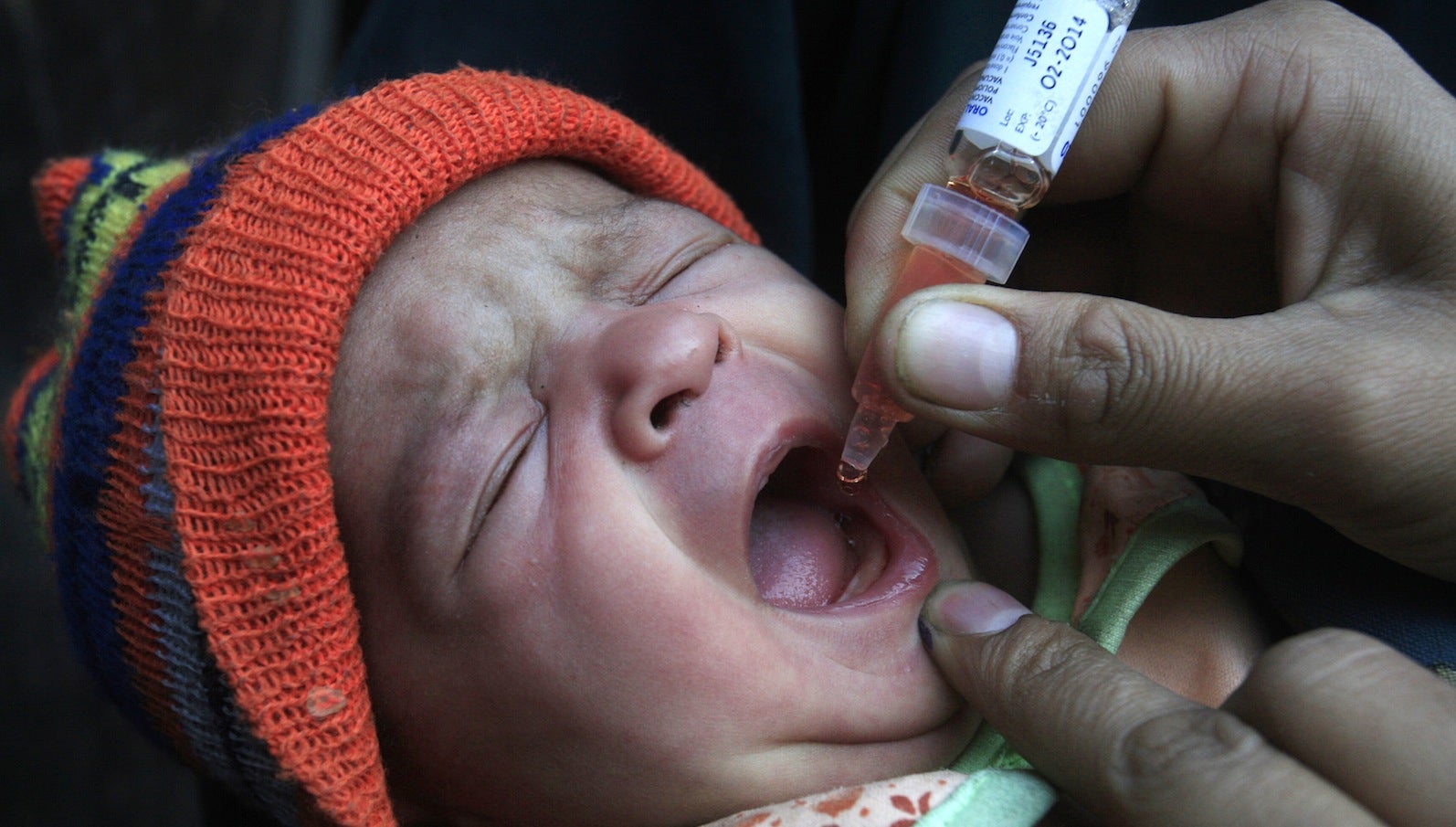A polio-free world is in sight: what’s needed to wipe out the last 1%
The next three years are crucial in the global fight to eradicate the last 1% of polio cases and contain the virus across the world. But it will only become a reality with a combination of intensive vaccination campaigns and high-level surveillance to trace and monitor each polio case and circulating viruses.


The next three years are crucial in the global fight to eradicate the last 1% of polio cases and contain the virus across the world. But it will only become a reality with a combination of intensive vaccination campaigns and high-level surveillance to trace and monitor each polio case and circulating viruses.
Central to achieving this is the polio eradication and endgame strategic plan 2013 to 2018. The plan belongs to the World Health Assembly’s Global Polio Eradication Initiative. It was developed to eliminate and contain all wild, vaccine-related and sabin, which is a live but weakened strain, of the polioviruses by 2018.
Since the initiative was launched by the assembly in 1988, the number of polio cases have reduced by 99%. The remaining 1% of cases can be found in the two countries with endemic polio—Pakistan and Afghanistan. Nigeria was the third polio-endemic country until July 2015, when it recorded one full year with no new cases.
Polioviruses belong to the family of viruses that infect the human gastrointestinal tract and cause diseases of the nervous system. It is caused by one of three related wild polioviruses—poliovirus types 1, 2 and 3, or as a result of a poliovirus derived from a vaccine.
The vaccine-derived poliovirus develops when the weakened vaccine-virus given to a child during immunisation is excreted in areas with bad sanitation. It then circulates.
Although wild poliovirus type 2 was eradicated worldwide in 1999, the majority of reported cases are from vaccine-derived poliovirus outbreaks associated with type 2 wild poliovirus.
Challenges in the plan
Eliminating this last 1% of polio cases requires two main strategies in the plan: immunisation and surveillance. Its immunisation arm aims to achieve a high level of immunity across all populations while the surveillance arm picks up new cases.
To achieve the two elements, a combination of innovations may be required. The innovations need to be applied in the most challenging conditions and should be tailored for each country and its settings.
Currently, 2.5 billion children across the world have received vaccination against polio.
The challenges holding back immunisation include:
- political unrest;
- dealing with misinformation that the polio vaccine causes sterility and/or AIDS;
- the banning of healthcare workers from vaccinating certain communities; or
- attacks on healthcare workers distributing the vaccine, as has been the case in Nigeria and Pakistan.
In 2003, polio vaccination was stopped in parts of northern Nigeria. This caused a polio outbreak in six other countries. In Pakistan, the Taliban have launched several attacks on healthcare workers trying to vaccinate children.
Today, problems still persist in Pakistan. And recently, a church in Kenya started a misinformation campaign.
Why surveillance is important
Polioviruses replicate in the intestine of infected people and are shed in high numbers in faeces. As a result, the virus is found in sewage and faecally-contaminated water sources. Active surveillance is important to identify residual pockets of the poliovirus. These inform the areas where the supplementary immunisation campaigns are required.
Most people infected with polioviruses have inapparent or mild disease but a small percentage will develop polio. To successfully eliminate the disease, it is important that experts monitor both the virus’ transmission and the characteristics of people who have contracted the disease.
There are two aspects of surveillance. Within the global initiative, the gold standard for surveillance is the monitoring of cases of acute flaccid paralysis, or weakness in the limbs, in children under 15. Once this is picked up, further investigation needs to be done in the immediate community.
But in regions where surveillance for acute flaccid paralysis is either low or absent, alternate surveillance is needed. Here, environmental surveillance must be applied at sites where the virus is suspected to persistently circulate or can be reintroduced. This entails monitoring the sewage in high-density urban populations.
The benefit of this strategy was seen in 2013 when wild poliovirus was detected in the sewage in southern and central Israel and the West Bank. No cases of polio were reported but the poliovirus found was related to viruses present in Egypt and Pakistan. This early warning prompted an additional immunisation programme to prevent a potential outbreak of polio.
Towards the end goal
Until 2018, there will be continuous environmental surveillance of the poliovirus in the polio-endemic areas of Pakistan, Afghanistan and the recently-cleared Nigeria. Virologists will try to identify residual transmission and new importations. They will also monitor the switch from the vaccine that treats all three wild polioviruses to the one which treats only two. The third has been eradicated.
This strategy provides an important passive and non-invasive supplementary surveillance system to monitor circulating polioviruses in non-endemic countries and countries still using oral polio vaccines. This was shown in Israel.
Eliminating polio worldwide is achievable. But the success or failure of the global initiative depends on political and social will and adequate funding.
Since 1988, more than $9 billion has been invested into the global polio eradication initiative. Although more money is needed for the plan to be implemented until 2018, donor fatigue and anti-vaccine movements, such as those in Nigeria and Pakistan, could derail the process. This could cause a public health crisis.
But with adequate immunisation and the surveillance of both acute flaccid paralysis and the environmental factors, the polio-free status of the non-endemic countries can be maintained. This will also ensure that the transmission of polio in endemic countries is identified and interrupted.
This post first appeared on The Conversation. We welcome your comments at [email protected].